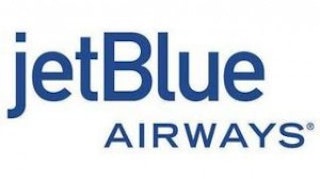An uncertain economic environment has considerably shrunk the US commercial air carriers market. Although the industry experienced an increase in traffic over the past three years, it has failed to achieve its pre-crisis levels in terms of passengers and available seat miles. High fuel costs and competition within the domestic market have forced airline operators to improve their utilization of available capacity in order to enhance profitability. Fewer flights with more available seat miles and passengers has led to the load factor in the industry reaching a record breaking level of more than 83%.

Domestic air travel has seen consolidation in recent years as high competition and costs made operations for some air line operators unfeasible. Within the domestic market, Alaska Air Group, Inc. (NYSE:ALK), Southwest Airlines Co. (NYSE:LUV) and JetBlue Airways Corporation (NASDAQ:JBLU) are some of the largest within the industry and each have shown attractive growth in revenues and net margins.
These companies have traditionally been marked as low cost carriers using the point-to-point network as opposed to the hub-and-spoke network used by the legacy carriers and have given tough competition to the legacy carriers in the US market. The low fares provided by these airlines have helped these companies generally perform better than the legacy carriers in terms of revenue growth and margins during the recent past through the dire environment. These airlines have positioned themselves strongly over the past few years and it is expected that these airlines will remain strong competitors to the legacy carriers and will dominate the domestic market in the future.
Achieving growth in difficult times
Southwest Airlines Co. (NYSE:LUV), the biggest amongst the three in terms of total revenue, experienced an increase in revenue (at a Compound Annual Growth Rate (CAGR) of 11.62%) from $9.86 billion in 2007 to $17.09 billion in 2012. The increase can be attributed to higher passenger yields, a gradual increase in fares, and the acquisition of AirTran in mid 2011.
The company’s operating margins have reduced significantly over the years, dropping from 8% in 2007 to 3.6% in 2012. This decrease in 2011 and 2012 can be attributed to costs incurred in the AirTran acquisition, higher fuel costs and a large quantity of losses recognized on hedging instruments used for fuel costs. I strongly believe that the company will be able to show an improvement in its margins in the future, but its revenue growth will be considerably slower than what it achieved in the recent years.
Alaska Air Group, Inc. (NYSE:ALK) has experienced the slowest revenue growth at a CAGR of 5.84%. However the company showed a massive improvement in operating margins over the years, increasing from -4.7% in 2007 to 11.4% in 2012. The increase in the revenue is attributable to higher fares, increasing revenue passenger miles (RPMs) and the increasing efficiency of the company’s operations.
The company has experienced the largest growth in RPMs at a CAGR of 7.2% as compared to 3.4% and 2.8% for Southwest Airlines Co. (NYSE:LUV) and JetBlue Airways Corporation (NASDAQ:JBLU), respectively. The company has been able to improve efficiency by improving cost structures and increasing the utilization of its capacity. The company has been able to reduce its number of flights over the past decade while it has improved its load factor from 76.4% in 2007 to 86.58% in 2012. It is expected that the company will continue to experience a similar growth in revenue in the future as it adds new routes and increase its fares further. In the future, increasing competition will limit the company’s ability to raise fares.
Out of the peers, JetBlue Airways Corporation (NASDAQ:JBLU) is the only company that experienced attractive revenue growth combined with an improvement in its operating margin. The company’s revenue grew at a CAGR of more than 11.8% over the past 5 years and its operating margin increased by 160 basis points, to 7.5% in 2012.
The company has achieved high growth in revenues primarily as a result of increasing capacity, raising the average fare charged and the improvement in load factor. A better utilization of capacity and the increasing ancillary revenues has caused the company’s operating margin to increase from 5.9% in 2007 to 7.5% in 2012.
As the company further increases capacity by introducing more routes and as the company increases the availability of its ancillary services; I expect the company’s revenues as well as margins to improve in the future.
A promising future
The Federal Aviation Administration (FAA) predicts that commercial aviation will remain flat in 2013, with little or no growth in capacity. As economic growth remains slow, the airline operators are keen on keeping load factors at a higher level in order to keep high efficiency in terms of costs and profitability. This is one of the reasons why FAA estimates that the growth in the commercial airline is likely to be slow over the next 20 years.
It is also estimated that slow economic growth will tend to keep the growth in air traffic suppressed over the forecast period. The FAA also estimates an increase in load factors and air fares which will drive higher margins for the commercial aircraft operators. These are positive signs for all the companies under review as I expect them to enhance their revenues and margins by increasing capacity as well as improving utilization.
Another source of revenue growth and margin improvement is the increase in the ancillary revenues, which are non-ticket related revenues including sources such as baggage fees, on-board food, frequent flier activities etc. Based on my analysis, I expect JetBlue Airways Corporation (NASDAQ:JBLU) to outperform its peers in terms of ancillary revenue growth as it still has ample space in its aircraft to install its ancillary services, specifically its widely popular Even More and related services, which generated approximately $150 million in revenues. Within this category, I would expect Southwest Airlines Co. (NYSE:LUV) to closely follow JetBlue Airways Corporation (NASDAQ:JBLU) as its extensive network and high traffic will allow the company to grow its revenues greatly by only a slight increase in per unit charges.
The takeaway
Based on the analysis and the future outlook, I would select Southwest Airlines as the one with the greatest potential to improve its revenues in the coming years. As per estimates of FAA, over the next two decades the load factor for the overall industry is expected to cross the 85% mark indicating that the companies will be concentrating more on controlling costs. Amongst the peers Southwest is currently operating at the lowest load factor, 80.4% as compared to Alaska Air Group, Inc. (NYSE:ALK)’s 87% and JetBlue Airways Corporation (NASDAQ:JBLU)’s 84.3%, which can be attributed to the acquisition of AirTran. Thus I believe that the company will be able to improve its revenues and margins primarily through improvement in load factors.
In the future, I expect the company to achieve a revenue growth of around 3% to 4% per annum, while its operating margin will slowly increase to 7%. These estimates indicate a high growth potential for the company’s earnings and this is why I will recommend buying southwest to take part in this expected future growth while for the remaining two peers I will give a neutral outlook as I expect these two to perform generally at the pace of the industry.
Hussain Asghar has no position in any stocks mentioned. The Motley Fool recommends Southwest Airlines. Hussain is a member of The Motley Fool Blog Network — entries represent the personal opinion of the blogger and are not formally edited.
The article Who Will Win the Domestic Airline Battle? originally appeared on Fool.com is written by Hussain Asghar.
Copyright © 1995 – 2013 The Motley Fool, LLC. All rights reserved. The Motley Fool has a disclosure policy.


